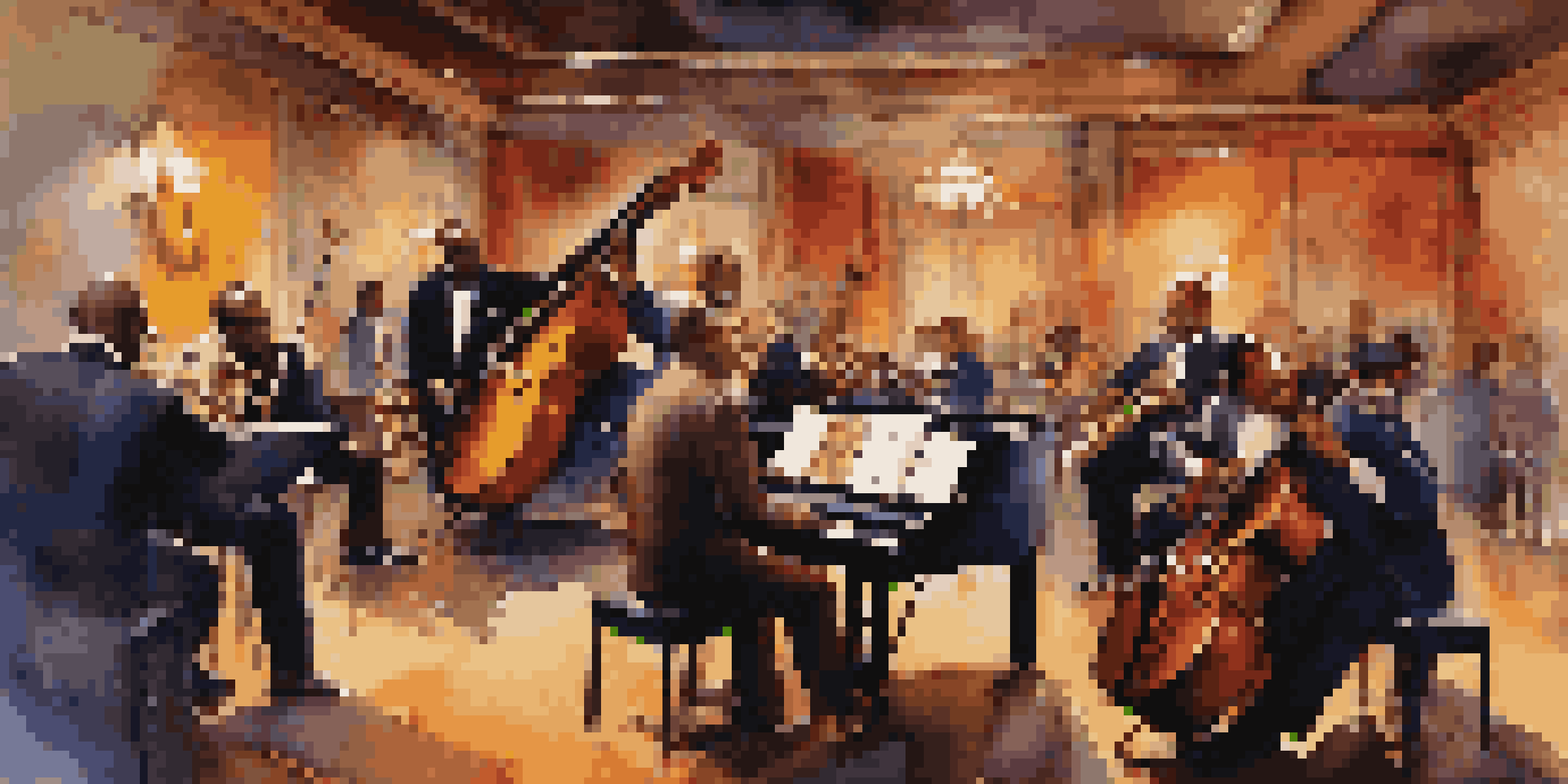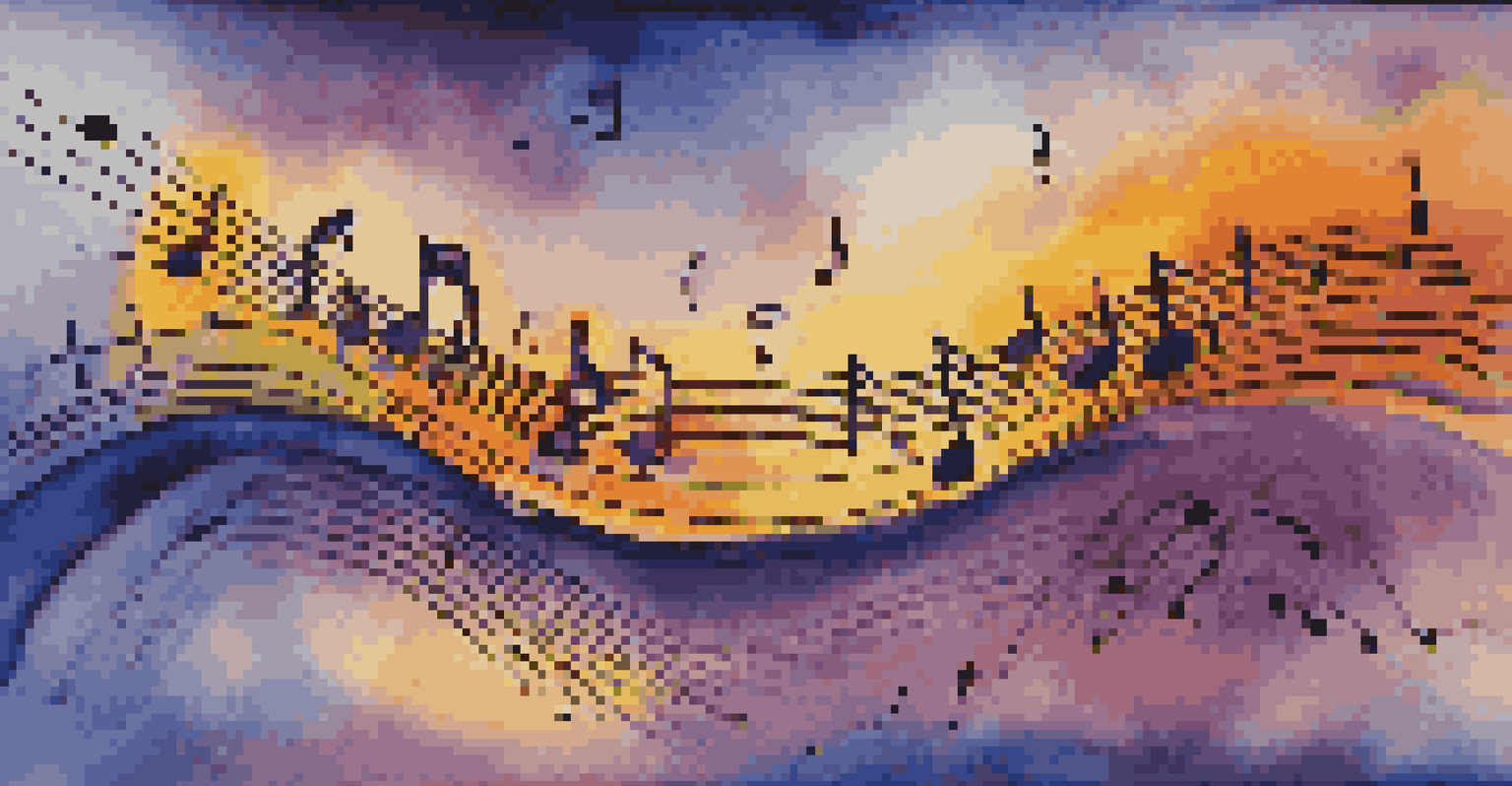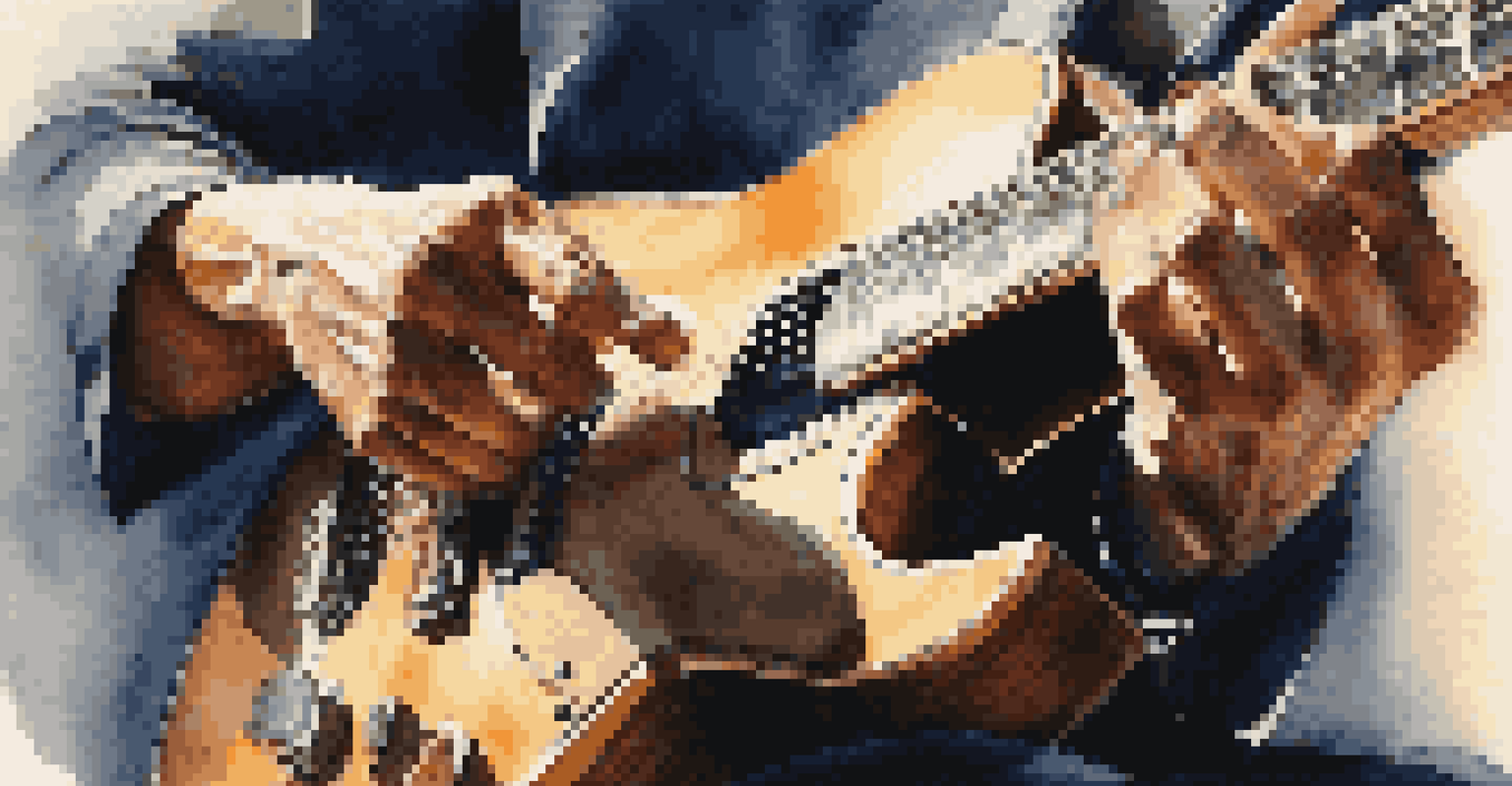Understanding Syncopation: Adding Complexity to Rhythms

What Is Syncopation? A Musical Overview
Syncopation is a rhythmic concept that shifts the emphasis from the strong beats of a measure to the weak ones. This creates a sense of surprise and can make music feel more dynamic and engaging. You might hear syncopation in various genres, from jazz to rock, where it adds a unique flavor to the rhythm.
Syncopation is the lifeblood of rhythm, adding layers of complexity and intrigue to music.
To put it simply, if you think of a typical drum beat, it usually emphasizes beats one and three. Syncopation flips this expectation, placing emphasis on beats two and four, or even off-beat notes. This playful manipulation of rhythm can transform a straightforward pattern into something much more interesting.
Overall, understanding syncopation can deepen your appreciation for music. It's not just about keeping time; it's about how timing can create tension and release, making the listening experience more engaging.
The Role of Syncopation in Different Music Genres
Different musical genres utilize syncopation in unique ways. For example, in jazz, syncopation is often used to create a laid-back yet intricate feel, giving musicians the freedom to improvise and play off each other. In contrast, in genres like reggae, syncopation contributes to the laid-back groove that defines the style.

Similarly, in funk music, syncopation is key to creating that signature danceable beat. The emphasis on off-beats encourages listeners to move, making it a favorite at parties and dance events. This shows how syncopation can not only add complexity but also enhance the emotional connection to the music.
Understanding Syncopation's Impact
Syncopation shifts emphasis in music, creating tension and surprise that enhances emotional engagement.
Understanding how different genres incorporate syncopation can help you appreciate the versatility of rhythms. By recognizing these patterns, you can also explore how they influence the overall feel and vibe of a piece.
Types of Syncopation: Exploring the Variations
There are several types of syncopation, each offering a different flavor to the music. The most common type is known as 'off-beat' syncopation, where emphasis is placed on the weak beats or between the strong beats. Another type is 'anticipatory' syncopation, where a note is played just before a strong beat, creating an exciting tension.
Music is the shorthand of emotion, and syncopation is one of its most expressive tools.
In addition, 'dotted' syncopation involves extending a note longer than expected, which can create an unexpected twist in rhythm. Each type serves to challenge the listener's expectations, enhancing the overall musical experience. Think of it like a roller coaster; it builds excitement and unpredictability.
By exploring these various types of syncopation, musicians can experiment with their own compositions. This not only adds depth to their music but also invites listeners into a more engaging auditory journey.
Syncopation and Its Emotional Impact on Listeners
Syncopation does more than just add complexity to music; it can evoke strong emotions in listeners. By disrupting the expected rhythm, syncopation can create feelings of tension, excitement, or even joy. It's fascinating how a simple shift in timing can alter our emotional response to a piece.
For instance, a syncopated rhythm in a pop song can elevate the energy, making you want to dance. On the other hand, in a ballad, it might introduce a sense of longing or introspection. This emotional versatility is one of the reasons why syncopation is so widely used across genres.
Syncopation Across Genres
Different music genres utilize syncopation uniquely, influencing their overall feel and emotional connection.
Ultimately, understanding the emotional impact of syncopation can enhance your connection to music. It invites you to feel the rhythm on a deeper level, transforming a passive listening experience into an active emotional journey.
Learning to Recognize Syncopation in Music
To truly appreciate syncopation, it's helpful to develop your listening skills. Start by tapping your foot to the beat of a song and then try to identify where the syncopated notes fall. You might find yourself surprised at how often these rhythms appear in your favorite tracks.
Listening to different genres can also enhance your understanding of syncopation. For example, try comparing a straight pop song with a jazz piece. You'll notice the latter often plays with syncopation much more, creating that distinctive groove that keeps your head bobbing.
As you become more aware of syncopation, you'll likely find it enriching your musical experience. It allows you to appreciate the craftsmanship behind the rhythms and gives you a greater understanding of what makes music so captivating.
Incorporating Syncopation into Your Own Music
If you're a musician, understanding syncopation opens up new avenues for creativity in your compositions. Start by experimenting with simple syncopated patterns in your playing or writing. You can take a basic chord progression and apply off-beat accents to make it more lively and engaging.
Additionally, don't shy away from incorporating different types of syncopation. Mixing anticipatory and dotted rhythms can add a unique touch to your music, setting it apart from more conventional compositions. It's all about finding that balance between complexity and coherence.
Incorporating Syncopation in Music
Musicians can enhance creativity by experimenting with various types of syncopation to enrich their compositions.
As you practice and compose, keep in mind how syncopation can shape the listener's experience. By carefully placing these rhythmic surprises, you can guide your audience through an emotional journey, making your music more impactful.
The Future of Syncopation in Modern Music
As music continues to evolve, so does the use of syncopation. Modern genres like electronic dance music (EDM) and hip-hop often incorporate syncopated rhythms to create infectious beats that get listeners on their feet. This showcases how syncopation remains relevant and adaptable across changing musical landscapes.
Moreover, with the rise of technology in music production, artists have more tools at their disposal to experiment with complex rhythms. This means we can expect to hear even more innovative uses of syncopation in the future, pushing the boundaries of musical expression.

Ultimately, syncopation will continue to be a vital element in music, enriching our listening experience. As artists experiment with this rhythmic technique, they’ll create new sounds and styles that resonate with audiences worldwide.